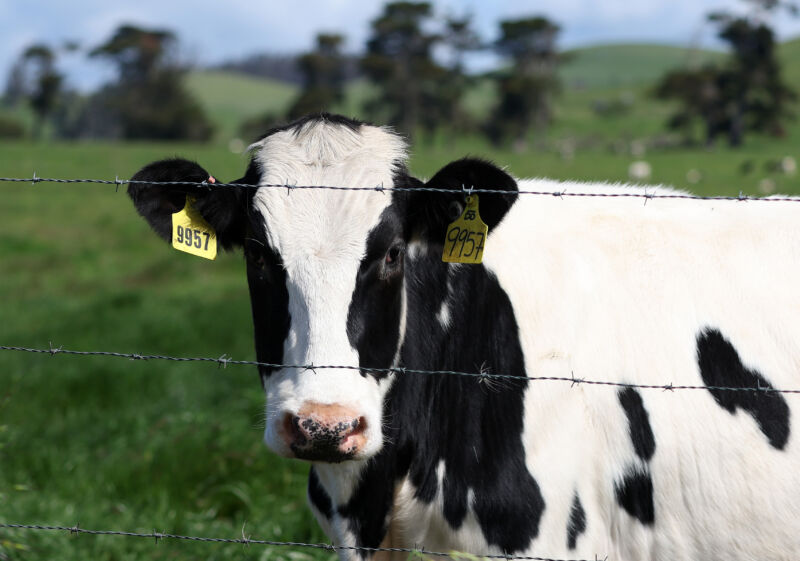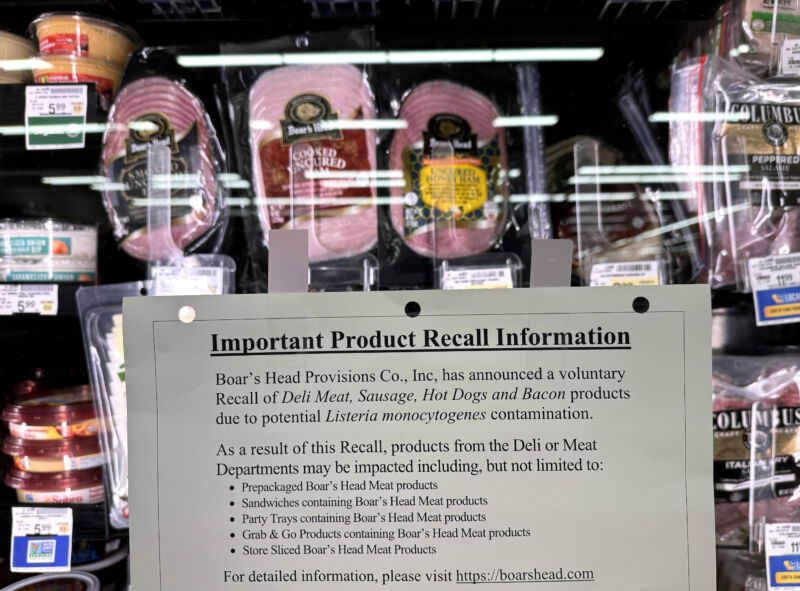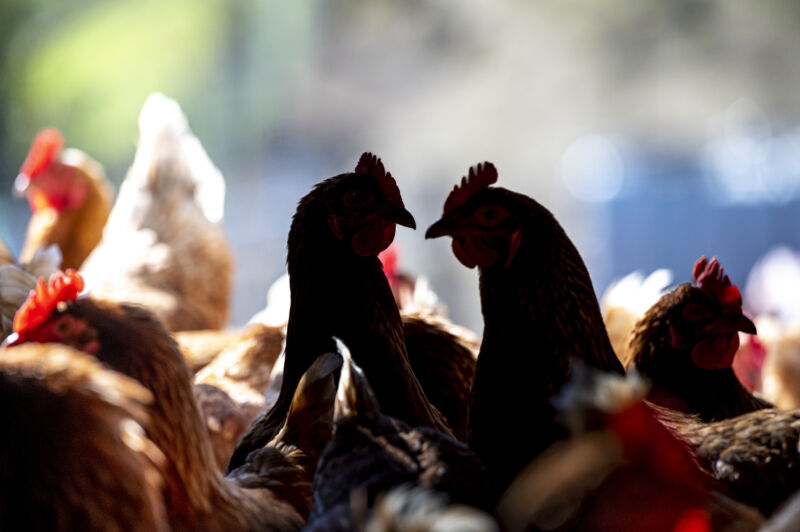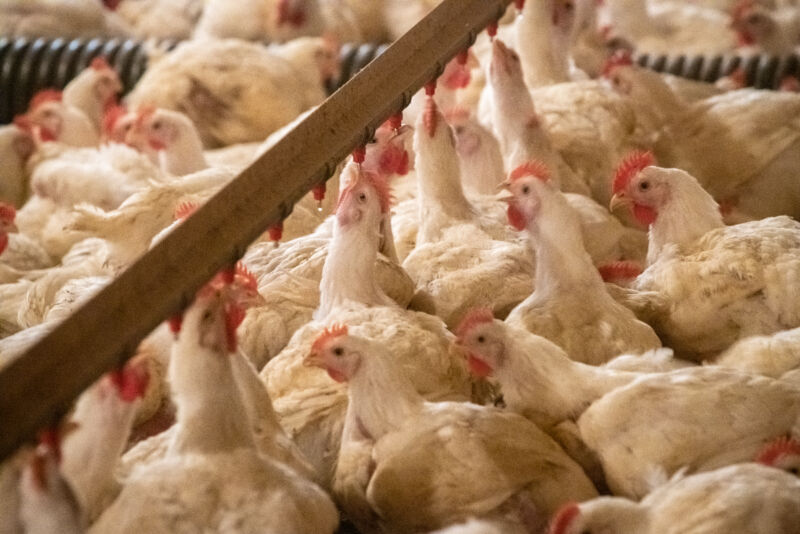Boar’s Head will never make liverwurst again after outbreak that killed 9
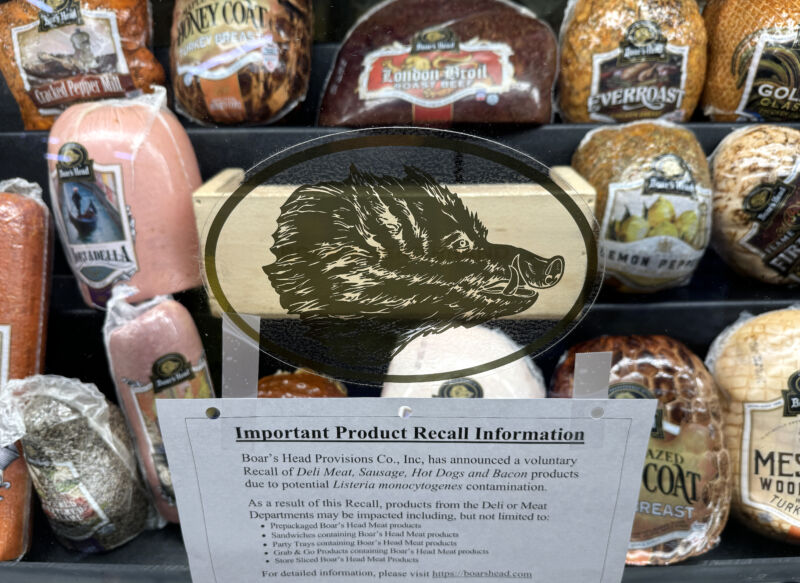
Enlarge / A recall notice is posted next to Boar's Head meats that are displayed at a Safeway store on July 31, 2024, in San Rafael, California. (credit: Getty | Justin Sullivan)
The Boar's Head deli-meat plant at the epicenter of a nationwide Listeria outbreak that killed nine people so far harbored the deadly germ in a common area of the facility deemed "low risk" for Listeria. Further, it had no written plans to prevent cross-contamination of the dangerous bacteria to other products and areas. That's according to a federal document newly released by Boar's Head.
On Friday, the company announced that it is indefinitely closing that Jarratt, Virginia-based plant and will never again produce liverwurst—the product that Maryland health investigators first identified as the source of the outbreak strain of Listeria monocytogenes. The finding led to the recall of more than 7 million pounds of Boar's Head meat. The Jarratt plant, where the company's liverwurst is made, has been shuttered since late July amid the investigation into how the outbreak occurred.
In the September 13 update, Boar's Head explained that "our investigation has identified the root cause of the contamination as a specific production process that only existed at the Jarratt facility and was used only for liverwurst. With this discovery, we have decided to permanently discontinue liverwurst."
